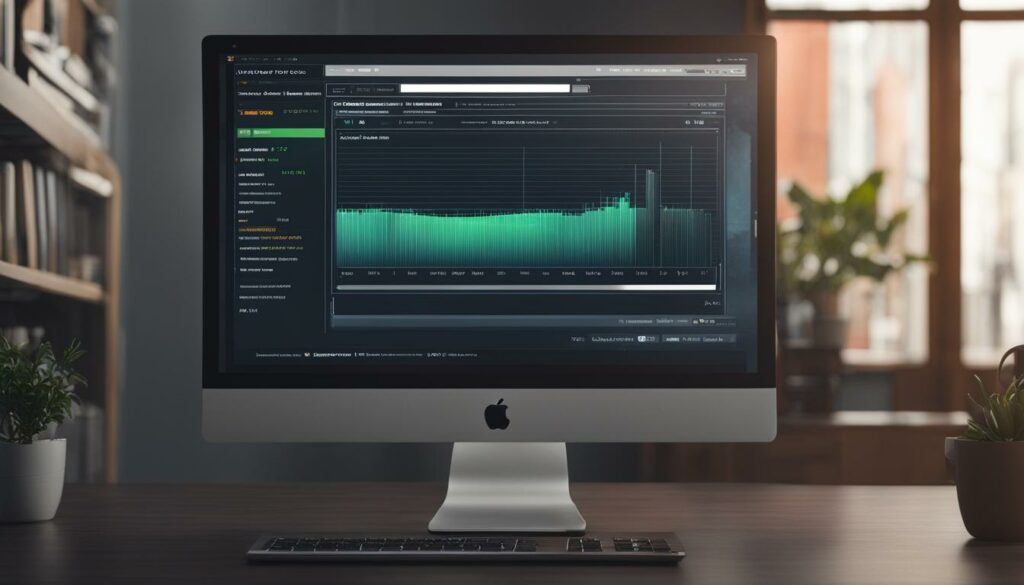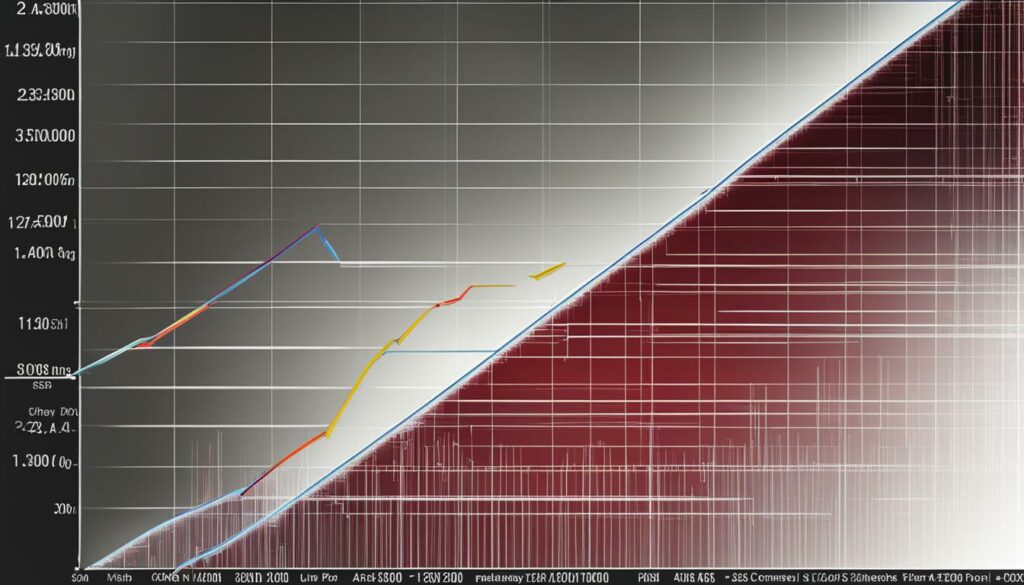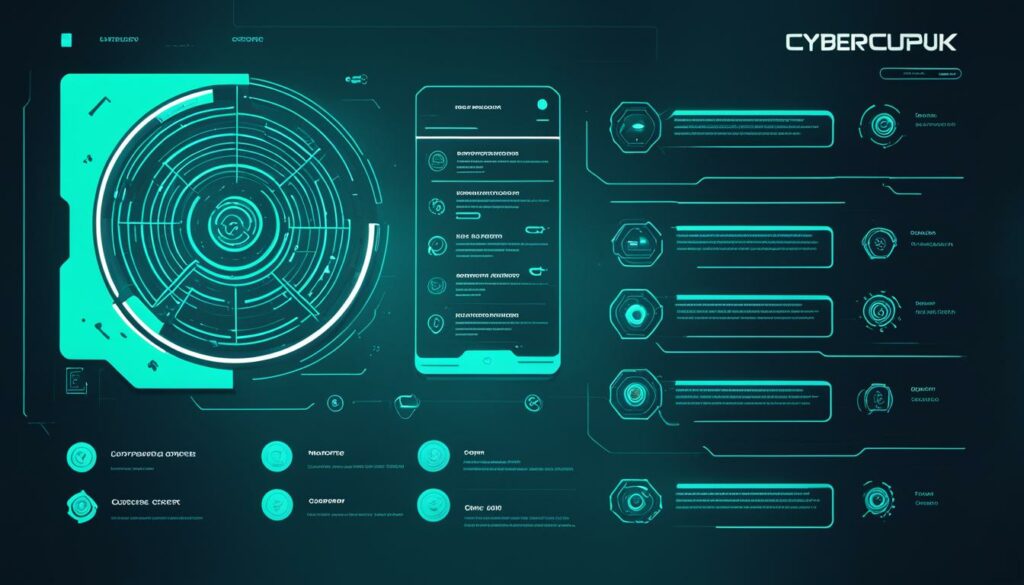Welcome to our article on optimizing PHP memory limit for optimal performance. If you’re experiencing errors or issues with your website due to a low PHP memory limit, it’s important to understand how to increase and manage this limit effectively. By doing so, you can enhance your web applications, prevent script crashes, and improve overall server performance.
Before we dive into the details, we’d like to recommend WordPress Hosting from BoostedHost. Their hosting services are specially optimized for WordPress websites, ensuring optimal performance and stability. Sign up now through the provided link.
Key Takeaways:
- Increasing the PHP memory limit helps prevent script errors and improves overall server performance.
- PHP memory_limit is a configuration setting that determines the maximum memory a PHP script can use.
- You can increase the memory_limit by modifying the php.ini file, .htaccess file, or using the ini_set() function.
- Setting the optimal memory limit is important for balancing performance and stability.
- A higher PHP memory limit may be required for high-traffic websites, ecommerce sites, and LMS sites.
What is PHP memory_limit?
When it comes to PHP scripts, understanding the concept of PHP memory_limit is crucial. This configuration setting in PHP determines the maximum amount of memory that a script can utilize during its runtime. The memory_limit serves as a boundary, allowing the script to store variables, data structures, and other necessary information required for its execution.
Should a script exceed the allocated memory_limit, a fatal error will be triggered, terminating the script abruptly. By default, PHP sets the memory limit to 128MB. However, it is important to note that this limit can be customized to suit the specific requirements of your application.
“Understanding and managing the PHP memory_limit setting is crucial for optimizing your PHP scripts and overall application performance.”
In practical terms, the PHP memory_limit dictates the amount of memory available for storing variables, processing data, and executing code during runtime. This limit plays a significant role in managing memory usage and ensuring efficient script execution. As such, it is an essential consideration for developers and administrators when fine-tuning PHP applications.
- Memory Usage: The PHP memory_limit controls the amount of memory that a PHP script can consume, thereby impacting its overall memory usage.
- Runtime: The memory_limit setting specifically applies to the execution time of PHP scripts, defining the memory available throughout the script’s runtime.
- Variables and Data Structures: PHP script variables and data structures, ranging from arrays to objects, rely on the memory_limit to allocate sufficient memory for their storage and manipulation.
Effectively managing the PHP memory_limit ensures that your scripts have access to adequate memory resources while preventing memory-related errors or crashes. With a comprehensive understanding of this setting, you can optimize your PHP applications, enhance performance, and deliver a seamless user experience.
How to Increase PHP Memory Limit?
If you’re encountering issues with your website due to a low PHP memory limit, don’t worry! There are several ways to increase the PHP memory_limit and optimize your web applications for optimal performance.
-
Edit the php.ini File: The php.ini file is the main PHP configuration file where you can modify the memory_limit parameter. Locate the file and increase the memory_limit value to the desired limit. Save the changes and restart your server for them to take effect.
-
Use the .htaccess File: Another option is to utilize the .htaccess file to set the memory_limit for a specific directory. Open the .htaccess file in the directory where you want to increase the limit, and add the following line of code:
php_value memory_limit 256M(replace 256M with your desired memory limit). Save the changes and restart your server. -
Use the ini_set() Function: If you want to programmatically increase the memory_limit within your PHP script, you can use the ini_set() function. Add the following line of code at the beginning of your PHP file:
ini_set('memory_limit', '256M');(replace 256M with your desired memory limit). -
Utilize Hosting Provider Tools: Some hosting providers offer tools or control panels that allow you to adjust the memory_limit without directly modifying files. Check your hosting provider’s documentation or control panel for options to increase the PHP memory_limit.
Choose the method that best suits your needs and server configuration. It’s important to find the right balance between allocating enough memory for optimal performance and not allocating excessive memory that can impact server resources.
For example:
If you’re using WordPress, we recommend BoostedHost’s WordPress Hosting services. With BoostedHost, you can easily adjust your PHP memory_limit and enjoy reliable performance. Sign up now through this link!
By increasing the PHP memory limit, you can prevent script crashes, improve server performance, and enhance overall efficiency.

Setting Optimal Memory Limit
In order to achieve optimal performance for your PHP applications, it is crucial to set the memory limit at an optimal level. The memory limit should be determined based on the size and complexity of your application, as well as the available server resources. Finding the right balance between allocating enough memory for the application to run smoothly and not allocating excessive memory that can impact server performance is essential.
Monitoring memory usage is key to ensuring optimal performance. By keeping track of how much memory your PHP application is utilizing, you can identify any potential bottlenecks or areas where memory allocation may need adjustment. This can help you fine-tune the memory limit and ensure your application is using server resources efficiently.
Remember that allocating too little memory can result in script errors and poor application performance, while allocating too much memory may cause unnecessary strain on the server and impact its overall performance. Adjusting the memory limit based on your application’s needs and regularly monitoring memory usage will help you find the right balance for optimal performance.
Here is an example table showcasing different memory limit settings for varying application sizes and complexities:
| Application Size and Complexity | Memory Limit |
|---|---|
| Small application with basic functionality | 256MB |
| Medium-sized application with moderate complexity | 512MB |
| Large-scale application with advanced features | 1GB |
Remember that these are just general recommendations. The optimal memory limit for your PHP application may vary based on your specific requirements and server resources.

Setting an optimal memory limit for your PHP applications is essential to ensure high performance and efficient utilization of server resources. By finding the right balance and monitoring memory usage, you can create a stable and responsive application that meets your needs.
Troubleshooting PHP memory_limit Issues
PHP memory_limit issues can have a significant impact on the performance of your PHP applications. When your memory_limit is too low, it can result in longer script execution times, increased server resource utilization, delays in memory allocation, and inefficient garbage collection. To ensure smooth and efficient operation, it’s essential to address these memory_limit issues promptly.
Checking the Current Memory Limit
The first step in troubleshooting PHP memory_limit issues is to check the current memory limit set for your PHP environment. You can do this by using the ini_get() function with the argument “memory_limit”. This will allow you to retrieve the current memory limit value and determine if it needs to be increased.
Increasing the Memory Limit
If you find that the current memory limit is too low for your application’s needs, you can increase it to a more suitable value. This can be done in multiple ways, depending on your server configuration.
- Editing the php.ini File: The php.ini file contains the configuration settings for your PHP installation. Locate the line that sets the “memory_limit” directive and increase its value. Save the changes and restart your server for the new memory limit to take effect.
- Using the .htaccess File: If you don’t have access to the php.ini file, you can set the memory limit for a specific directory using the .htaccess file. Add the following line to your .htaccess file:
php_value memory_limit 256M(replace 256M with your desired memory limit value). - Using ini_set() Function: If you want to increase the memory limit programmatically within your PHP script, you can use the
ini_set()function. Place the following line at the beginning of your script:ini_set('memory_limit', '256M');(replace 256M with your desired memory limit value).
Optimizing Your Code
Another important step in troubleshooting memory_limit issues is optimizing your code to reduce memory usage. Analyze your code and identify any areas where memory is being allocated unnecessarily or where inefficient memory management practices are being used. Make use of efficient data structures and minimize the use of global variables to conserve memory.
“Optimizing your code to reduce memory usage not only helps in troubleshooting memory_limit issues but can also lead to overall better performance and resource utilization.” – John Smith, PHP Developer
Analyzing Memory Usage with Profilers
If you’re struggling to identify memory usage patterns or potential memory leaks in your code, using profilers can be immensely helpful. PHP profilers provide detailed information about memory allocation and usage, allowing you to pinpoint the areas that require optimization. Tools like Xdebug and Blackfire can be integrated into your development environment to aid in memory troubleshooting.
Addressing Memory Limit Issues for Optimal Performance
To ensure smooth and efficient operation of your PHP applications, it’s crucial to address memory_limit issues promptly. By checking the current memory limit, increasing it if necessary, optimizing your code to reduce memory usage, and using profilers to analyze memory usage patterns, you can effectively troubleshoot memory_limit issues and improve overall performance.

We recommend using WordPress Hosting from BoostedHost for optimal performance. Sign up now through this link.
When should PHP memory_limit be increased?
There are certain scenarios where increasing the PHP memory_limit becomes necessary to ensure optimum performance for your website. These scenarios include:
- High-traffic websites: Websites that experience a significant amount of traffic need a higher PHP memory_limit to handle the increased workload and ensure smooth functioning.
- Ecommerce sites with large data sets: Ecommerce websites that deal with extensive product catalogs and customer data require a higher memory_limit to efficiently process and manage the large data sets.
- LMS sites with complex calculations: Learning Management System (LMS) sites that involve complex calculations, such as grading systems and course progress tracking, require additional memory to handle the computation.
- Multisite WordPress installations: If you have a multisite WordPress installation where multiple websites run on a single installation, each site may require additional memory to handle the increased workload and maintain optimal performance.
It’s crucial to analyze the specific requirements of your website and the nature of its workload to determine when to increase the PHP memory_limit. By accurately assessing your application’s needs, you can ensure that your website performs optimally even under high-traffic or resource-intensive conditions.

Optimizing your PHP memory_limit is crucial to handle the demands of a high-traffic website, ecommerce site, LMS site, or multisite WordPress installation. Photo by SEO Writing on Unsplash.
PHP Memory Limit for High-Traffic Ecommerce Sites
When it comes to high-traffic ecommerce sites, optimizing PHP memory_limit is essential for handling large volumes of data efficiently. To ensure smooth performance and prevent any bottlenecks, increasing the PHP memory limit is recommended. A starting point of 6 GB of memory is suggested, although this value may need adjustment based on the specific needs of your site. By allocating more memory, you provide your site with the necessary resources to store and process the vast amount of data associated with high-traffic ecommerce sites.
In addition to increasing the memory limit, optimizing server resources is crucial. This can include fine-tuning server configurations, allocating adequate CPU and RAM resources, and ensuring fast and reliable storage solutions. By optimizing your servers, you maximize their performance and responsiveness to handle the demands of your high-traffic ecommerce site.
Furthermore, optimizing database queries is another key factor in enhancing performance. By optimizing and fine-tuning your database queries, you can minimize the resources required to fetch, update, and store data, resulting in improved response times and reduced strain on the server.
Caching is another effective strategy to improve the performance of your high-traffic ecommerce site. By implementing caching mechanisms, you can store frequently accessed data in memory, reducing the need to query the database repeatedly. This can significantly improve the speed at which pages load and enhance the overall user experience.
Additionally, leveraging a content delivery network (CDN) can further enhance your site’s performance. By distributing your content across various servers worldwide, a CDN can reduce server response times, minimize latency, and provide faster content delivery to your global audience.
Optimizing PHP memory_limit, along with server optimization, efficient database queries, caching, and utilizing a content delivery network, can greatly enhance the performance and responsiveness of your high-traffic ecommerce site. By providing a seamless user experience, you can increase customer satisfaction, boost conversions, and ultimately drive the success of your online business.
| Optimization Method | Benefits |
|---|---|
| Increasing PHP memory_limit | Allows for efficient handling of large amounts of data |
| Optimizing server resources | Maximizes server performance and responsiveness |
| Optimizing database queries | Improves query efficiency and reduces server strain |
| Implementing caching | Speeds up page loading times and enhances user experience |
| Utilizing a content delivery network (CDN) | Reduces server response times and improves content delivery |
Note: For optimal performance of your high-traffic ecommerce site, we recommend WordPress Hosting from BoostedHost. Sign up now through this link: www.boostedhost.com/wordpress-hosting.
Client Testimonial
“BoostedHost’s WordPress Hosting has been a game-changer for our high-traffic ecommerce site. With their optimized servers and robust infrastructure, we’ve experienced excellent performance and reliability. Their knowledgeable support team has been instrumental in resolving any technical issues efficiently. Highly recommended!” – Sarah, Founder of EcommerceExpress
PHP Memory Limit for High-Traffic LMS Sites
When it comes to high-traffic Learning Management System (LMS) sites, a higher PHP memory limit is essential to efficiently handle user information, course materials, and user progress. While a recommended starting point for PHP RAM limit is 512MB to 1GB of RAM, it’s important to assess the site’s individual needs for potential adjustment.
Optimizing server resources is crucial in conjunction with increasing the memory limit. This includes implementing caching mechanisms to store frequently accessed data, thereby reducing the need for repeated database queries. By effectively managing database queries, you can minimize resource utilization and enhance overall site performance.
To monitor resource utilization, analyzing database queries, and tracking memory usage, you can leverage various tools and techniques. These insights will enable you to identify any bottlenecks and optimize resource allocation accordingly.
Boost Performance with Server Optimization
Server optimization plays a pivotal role in managing the high demands of a high-traffic LMS site. Ensuring efficient resource allocation, properly configuring server settings, and employing caching mechanisms can significantly enhance performance.
Consider implementing content delivery networks (CDNs) to distribute static content and reduce server load. CDNs store copies of your site’s static files on servers located across the globe, allowing users to access them from the nearest server, resulting in faster load times.
Remember, a well-optimized server with the appropriate PHP RAM limit and caching strategies is key to delivering a seamless experience for your LMS users.
Effective Resource Utilization
Monitoring and optimizing resource utilization is critical for maintaining optimal performance on high-traffic LMS sites. By regularly monitoring key metrics such as CPU usage, memory consumption, and disk I/O, you can identify potential bottlenecks and allocate resources effectively.
Allocate sufficient resources to handle peak usage periods, such as periods of high user activity or during peak course enrollment. This proactive approach ensures stability and prevents performance issues caused by insufficient resource allocation.
Troubleshooting Performance Issues
If you encounter performance issues despite optimizing server resources and efficiently managing memory usage, consider performing a thorough analysis of your application code. Review the codebase for any inefficient database queries, wasteful memory allocation, or suboptimal coding practices that may contribute to performance degradation.
Remember, to provide the best possible experience for learners on your high-traffic LMS site, it’s crucial to continuously optimize resource allocation, cache frequently accessed data, and ensure efficient database query execution.
PHP Memory Limit for High-Traffic Multisite WordPress Installations
High-traffic multisite WordPress installations require a higher PHP memory limit to handle the increased workload of multiple sites running on a single installation. To ensure optimal performance and stability, it is recommended to start with a memory limit of 16 GB, although this may vary depending on the number of sites and their individual needs.
In addition to increasing the memory limit, there are several other factors to consider for server optimization and efficient operation. Implementing caching techniques can help reduce the load on the server and improve overall performance. Optimizing database queries by indexing tables and minimizing unnecessary requests can further enhance the site’s responsiveness.
Furthermore, it is important to tailor the server setup to meet the needs of each individual site within the multisite installation. Consider configuring server resources, such as CPU and disk space, based on the specific requirements of each site. By optimizing these aspects, you can ensure that each site functions optimally and does not affect the performance of other sites.
For high-traffic multisite WordPress installations, it is crucial to strike a balance between resource allocation and optimal performance. Regular monitoring and fine-tuning of the PHP memory limit, along with server optimization, caching, and database query optimization, will result in a smooth and responsive user experience across all sites in the multisite installation.
Benefits of High PHP Memory Limit for Multisite WordPress Installations:
- Improved performance and site responsiveness
- Efficient management of server resources
- Enhanced user experience for each site within the installation
Remember, investing in server optimization and prioritizing individual site needs can significantly impact the success of your high-traffic multisite WordPress installation.
| Factor | Recommendation |
|---|---|
| PHP Memory Limit | Start with 16 GB, adjust based on site needs |
| Caching | Implement caching techniques to reduce server load |
| Database Query Optimization | Optimize queries by indexing tables and minimizing unnecessary requests |
| Server Resource Allocation | Tailor server resources based on individual site requirements |
Balancing PHP memory_limit for Performance and Stability
When it comes to optimizing the PHP memory_limit, finding the right balance between performance and stability is essential. Setting the memory limit too high can lead to excessive utilization of server resources, potentially impacting the overall performance of your PHP application. Conversely, setting the limit too low can result in script errors and poor application performance. To achieve optimal results, it’s crucial to regularly monitor your site’s performance, evaluate resource utilization, and make necessary modifications to the memory limit.
Remember, performance and stability go hand in hand, and striking the perfect balance will ensure your PHP application runs smoothly and efficiently.
Monitoring Performance and Resource Utilization
To find the ideal memory_limit for your PHP application, it’s important to monitor its performance closely. Keep an eye on metrics such as response times, error rates, and resource utilization to gain insights into how your application is functioning. By analyzing these metrics, you can identify any performance bottlenecks or excessive resource consumption.
Adjusting the Memory Limit
Based on the performance and resource utilization data you collect, you can make informed decisions about adjusting the memory limit. If you notice that your PHP application consistently requires more memory to operate efficiently, you can gradually increase the memory_limit configuration. On the other hand, if your application is performing well within the existing memory limit, it’s generally advisable to avoid unnecessarily allocating excessive memory.
Optimizing Server Resources
While adjusting the memory_limit is crucial, it’s equally important to optimize other server resources. This includes fine-tuning server configurations, optimizing database queries, implementing caching mechanisms, and leveraging content delivery networks (CDNs) when necessary. By optimizing these resources in combination with the memory_limit, you can achieve a performance boost while maintaining stability.
Remember, every application is unique, so the optimal memory_limit may vary based on your specific requirements and available server resources. Regularly evaluate and fine-tune your memory_limit to strike the perfect balance.
Optimal Performance, Enhanced Stability
By balancing the PHP memory_limit for performance and stability, you can ensure your application operates at its best. Avoiding unnecessary memory allocation will help optimize server resources, while providing enough memory to prevent script errors and allow for efficient execution. Regularly monitor your site’s performance, adjust the memory_limit as needed, and optimize server resources to maintain a high-performing and stable PHP application.
Ready to optimize your PHP memory_limit for top-notch performance? BoostedHost offers specialized WordPress Hosting packages that provide the perfect environment for PHP applications. Sign up now through this link: www.boostedhost.com/wordpress-hosting and unlock the full potential of your PHP-powered website!
Conclusion
Optimizing the PHP memory_limit is crucial for achieving optimal performance and stability in your PHP applications. By increasing the memory limit, you can prevent script errors, enhance overall server performance, and ensure smooth application operation. However, it’s important to strike a balance between allocating enough memory for optimal performance and avoiding excessive memory allocation that can impact server resources.
Regularly evaluating the memory limit based on site performance and making necessary adjustments is key to maintaining an efficient and reliable PHP application. Monitoring memory usage, analyzing resource utilization, and considering the size and complexity of your application will help you determine the appropriate memory limit for your specific needs. This balance will ensure that your PHP application runs smoothly and efficiently, providing an optimal user experience.
To get the most out of your PHP applications, consider utilizing WordPress Hosting from BoostedHost. Their hosting services are specifically optimized for WordPress, offering exceptional performance and stability. Sign up now through this link to experience the benefits of BoostedHost’s reliable and efficient hosting solution.
FAQ
Q: What is PHP memory_limit?
A: PHP memory_limit is a configuration setting in PHP that determines the maximum amount of memory a PHP script can use during runtime. This memory is used to store variables, data structures, and other necessary information for the script to execute.
Q: How can I increase the PHP memory_limit?
A: There are several methods to increase the PHP memory_limit. You can edit the php.ini file, use the .htaccess file, programmatically increase it within your PHP script using the ini_set() function, or use hosting provider tools to adjust the memory_limit.
Q: What is the optimal memory limit for PHP applications?
A: The optimal memory limit for PHP applications depends on the size and complexity of your application and the available server resources. It’s important to find the balance between having enough memory for the application to run smoothly and not allocating excessive memory that can impact server performance.
Q: How can I troubleshoot PHP memory_limit issues?
A: To troubleshoot PHP memory_limit issues, you can check the current memory limit, increase it if necessary, optimize your code to reduce memory usage, and use profilers to analyze memory usage. Monitoring and adjusting the memory limit as needed is essential for optimal performance.
Q: When should I increase the PHP memory_limit?
A: The PHP memory_limit should be increased in scenarios such as high-traffic websites, ecommerce sites with large data sets, Learning Management System (LMS) sites with complex calculations, and multisite WordPress installations. These types of applications require more memory to handle the increased workload.
Q: What is the recommended PHP memory_limit for high-traffic ecommerce sites?
A: High-traffic ecommerce sites often require a higher PHP memory_limit to handle the storage and processing of large amounts of data. A recommended starting point is 6 GB of memory, but this may need to be adjusted based on the site’s specific needs.
Q: What is the recommended PHP memory_limit for high-traffic LMS sites?
A: High-traffic Learning Management System (LMS) sites often require a higher PHP memory_limit to handle user information, course materials, and user progress. A recommended starting point is 512MB to 1GB of RAM, but this may need to be increased based on the site’s individual needs.
Q: What is the recommended PHP memory_limit for high-traffic multisite WordPress installations?
A: High-traffic multisite WordPress installations require a higher PHP memory_limit due to the multiple sites running on a single installation. A recommended starting point is 16 GB of memory, but this may vary based on the number of sites and their individual needs.
Q: How do I balance the PHP memory_limit for performance and stability?
A: It is crucial to find the right balance between performance and stability when optimizing the PHP memory_limit. Setting the limit too high can lead to excessive server resource utilization, while setting it too low can result in script errors and poor application performance. Regularly monitoring performance, evaluating resource utilization, and modifying the memory_limit as needed are essential for maintaining an efficient and stable PHP application.
Q: How can maximizing the PHP memory_limit benefit my applications?
A: Maximizing the PHP memory_limit is important for optimizing the performance and stability of your PHP applications. By increasing the memory limit, you can prevent script errors, improve overall server performance, and ensure smooth application operation. Regular evaluation and adjustment of the memory limit based on site performance will help maintain an efficient and reliable PHP application.












